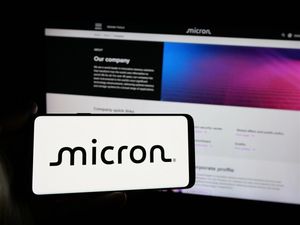Moment of Clarity has released a new educational resource titled "How Does Ketamine-Assisted Therapy Work?", available on their website. The article explores how ketamine-assisted therapy is being used to support patients living with depression, anxiety, post-traumatic stress disorder (PTSD), and other complex mental health conditions. By explaining both the science and the clinical context, the resource helps patients and families understand where ketamine-assisted therapy fits within broader treatment plans.
The article explains that ketamine, when administered in controlled medical environments, can influence brain chemistry in ways that support new neural pathways. Unlike traditional antidepressant medications, which often require weeks to take effect, ketamine has been shown in clinical studies to provide relief more quickly for some patients. A 2019 report from the American Psychiatric Association (APA) noted that ketamine, when used under medical supervision, can significantly reduce depressive symptoms in treatment-resistant patients. The U.S. Food and Drug Administration (FDA) has also approved a form of ketamine, esketamine (Spravato), for treatment-resistant depression, providing additional validation for its therapeutic use.
Moment of Clarity’s resource emphasizes that ketamine-assisted therapy is not a stand-alone solution but works best as part of a comprehensive care model. Sessions are most effective when paired with counseling, trauma-focused therapy, or approaches such as dialectical behavior therapy (DBT) and transcranial magnetic stimulation (TMS). This integration ensures that patients not only experience symptom relief but also develop long-term strategies to manage their underlying conditions.
The publication also addresses safety concerns. While ketamine is sometimes misused recreationally, the article clarifies that therapeutic use involves carefully measured, low doses administered in clinical settings under medical supervision. This structured process reduces risks and maximizes benefits. Reported side effects, such as mild dissociation or dizziness, are generally temporary, and patients are monitored throughout the treatment.
For patients and families in Long Beach, the availability of advanced treatments like ketamine-assisted therapy reflects progress in mental health care. Communities such as Bixby Knolls and Signal Hill, where military families and veterans reside, are highlighted as examples of populations that may particularly benefit from trauma-informed approaches. By offering education about therapies that go beyond standard talk therapy or medication, the resource provides reassurance that new options exist for those who have struggled with resistant symptoms.
The article also explains how ketamine-assisted therapy can be delivered across different levels of care. Patients who do not require hospitalization may access the treatment through outpatient or intensive outpatient programs (IOPs), where structured therapy is provided during the day and patients return home afterward. For those who require additional support, partial hospitalization programs (PHPs) offer a higher level of care without necessitating 24-hour inpatient admission. Integrating ketamine-assisted sessions into these frameworks allows patients to receive individualized, comprehensive care tailored to their needs.
Another critical theme is stigma reduction. Many people delay pursuing mental health treatment because they fear judgment or uncertainty about newer modalities. By presenting evidence-based explanations of how ketamine works and acknowledging FDA approval of related therapies, the resource helps normalize advanced approaches. This message is especially valuable in diverse communities throughout Long Beach, California, where access to culturally competent, innovative care remains essential.
In addition to ketamine-assisted therapy, the publication highlights the importance of addressing co-occurring conditions. Patients with depression often experience anxiety or PTSD, and therapies that combine medication with behavioral support provide more durable results. According to the National Institute of Mental Health (NIMH), treatment models that integrate pharmacological and psychotherapeutic interventions have been shown to improve patient outcomes compared to medication alone significantly.
By publishing the recent article on "How Ketamine Assisted Therapy Works," Moment of Clarity demonstrates its commitment to expanding access to reliable, evidence-based education. The resource clarifies how ketamine-assisted therapy functions, who may benefit, and how it can be combined with established therapies to support recovery.
For individuals in Long Beach seeking accurate information on advanced treatment options, this publication provides a balanced overview grounded in clinical research rather than promotional claims. By combining education with practical guidance, Moment of Clarity reinforces its role as a trusted provider of mental health services, offering hope to patients exploring innovative paths toward healing.
https://www.youtube.com/shorts/6TXiqZ-rMX0
###
For more information about Moment of Clarity Long Beach, contact the company here:
Moment of Clarity Long Beach
Marie Mello
(949) 844-3927
marie@momentofclarity.com
2664 Atlantic Ave, Long Beach, CA 90806






